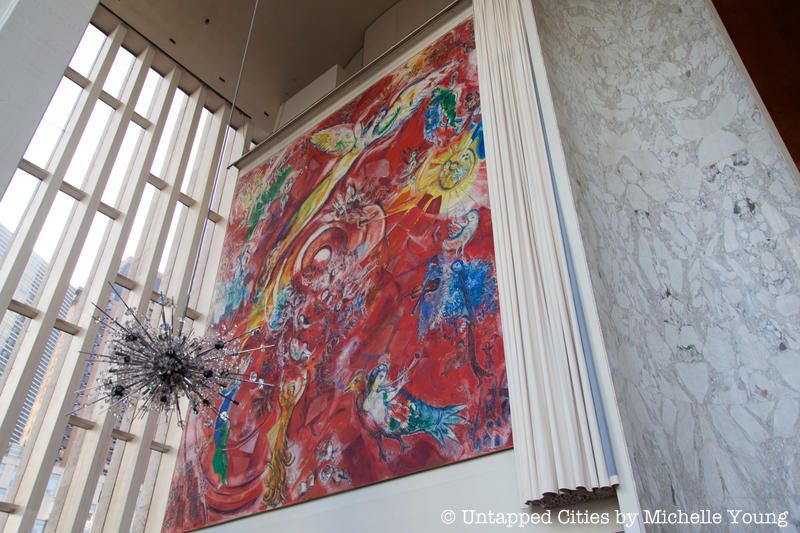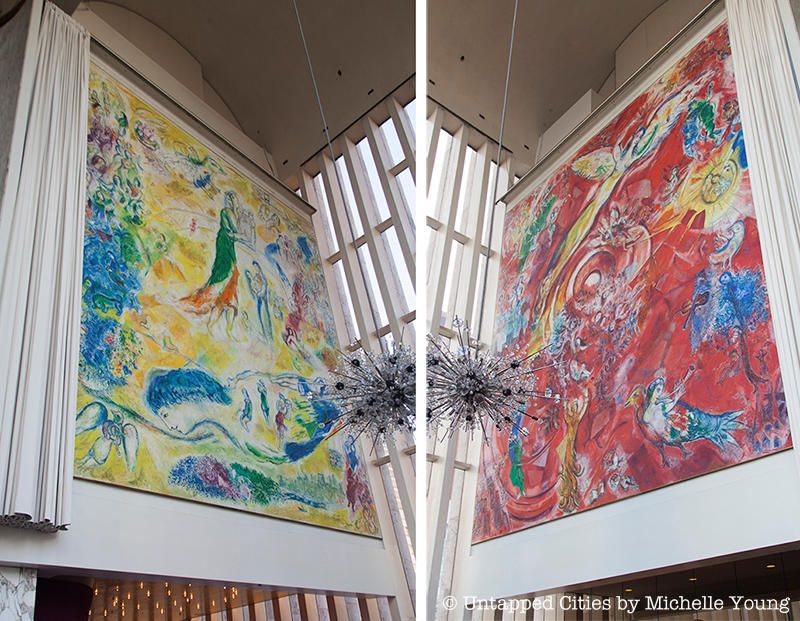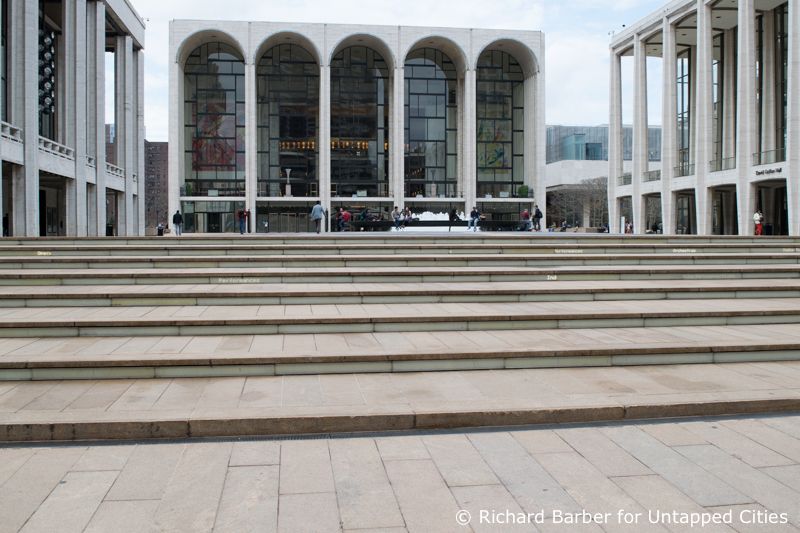Last Chance to Catch NYC's Holiday Notalgia Train
We met the voices of the NYC subway on our nostalgia ride this weekend!


On May 8, the Metropolitan Opera celebrated its 50th anniversary at Lincoln Center. Today, opera finds itself in an era of forced transformation—in much the same position as famed artist Marc Chagall was when he was commissioned to paint his iconic murals, The Sources of Music and The Triumphs of Music along with the set and costume designs Lincoln Center’s presumer opera, The Magic Flute in 1966
It’s both Chagall’s heritage and groundbreaking artistic style that perhaps uniquely qualifies Chagall to have his 30 feet by 36 feet murals forever-fixed to the walls of Lincoln Center. Born a Russian-Jew in Liozna (present day Belarus), then moving to France to be a student of the famous of post-impressionist School of Paris and ultimately a refugee of World War II in New York City, Marc Chagall is a product of adaptation and innovation himself.

This set of personal tragedies and physical and emotional upheaval was then expressed in his personal artistic style and as Wullschlager surmises, is what allowed Chagall to “invent a visual language that recorded the thrill and terror of the twentieth century… the breakthrough of art to an expression of inner life.” In essence, Chagall created discourse out of the pieces of his destruction along with his Jewish heritage.
This kind of harmonious discourse is exactly what’s interplaying between the two pieces. As art critic Patricia Boccadoro wrote of the paintings, the yellow panel that is The Sources of Music shows King David in double profile as he plays a harp surrounded by musicians, animals and angels, while the red panel that is The Triumph of Music, “represents a victorious angel blowing a trumpet in the midst of a whirlwind, sweeping up musicians, orchestra, dancers and phantasmagorical animals in its wake.” Booccadoro continues to surmise that Chagall’s love of Mozart– the composer of The Magic Flute– is evident through the two pieces as well the costume and set work, which the Opera’s director, Gunther Rennert, had reportedly described as “fantastic.”
[post_featured_tour]
In many ways then, Chagall’s work for Lincoln Center’s premiere of The Magic Flute is the quintessence of everything that Chagall’s work stood for and ultimately defined his drive to create. It was the mix of perfect melancholy Chagall found in Mozart’s work that was reflective of his feelings towards life in the wake of the tragedies throughout his own. “Perfection is close to death,” Chagall said in reference to The Magic Flute as it premiered just two months prior to Mozart’s death on December 5, 1791, continuing on to say, “For me there is nothing on Earth that approaches those two perfections– The Magic Flute and the Bible.”
 “The Triumph of Music” (left) and “The Sources of Music” (right)
“The Triumph of Music” (left) and “The Sources of Music” (right)
Even the accidental switch in the placement of the murals, which Chagall had originally envisioned as being reversed, can be viewed as an extension of the symbolism, for Chagall works his chaotic view of life so evident in his work. The anecdote of Chagall’s response to the murals apparently swapped and irrevocable positions high on the walls of Lincoln Center Plaza is almost as famous as the pieces themselves.
As scholar Jackie Wullschlager notes in her biography of the artist, Chagall reported that upon seeing the murals in their reversed state, he “yelled as I never have before. My mother, when she gave birth to her children, didn’t yell as much. I could doubtless be heard all over Lincoln Square.” However, true to the unwritten manifesto that is Chagall’s work, eventually he decided he liked the placement, and in fact, preferred it to his original vision.
Now, although once at the height of innovation and artistic expression itself, Opera’s American audience is aging. This outcome was foreshadowed as early as 1991, according to a study done by James Heilbrun. The study—which aggregated evidence that operatic repertories across the country were progressively becoming less diverse in favor of only the most popular operas—credited the tightening of those scopes to the need they felt to “ward off financial pressure.” This was exceptionally visible for the Met Opera itself in 2009 when it’s original endowment, once $300 million was down by more than a third with “donations way off” according to the New York Times. The diminishing funds even led the Met Opera to put up the two murals as collateral to free up cash from a loan that was at the time, at least $35 million.
 The Met Opera
The Met Opera
But whatever the Met’s current financial standing was these 8 years later, the New York Times reported in their review of the 2017 Gala, that it appeared the Met Opera seized their moment that evening to “hit a reset button.” The evening fused operatic classics with presentations utilizing modern technology and mixed the execution of those classics among opera legends, current stars, and those on the rise. The five-hour performance was a mix of the present and the past– a notable segment when those murals of Marc Chagall, featuring video of the Chagall himself at work, made it to center stage. The segment, which combined contemporary technology with the beauty and tradition of the past, symbolized the sense of timeless beauty and relevance the Met Opera is looking to highlight about its art form.
These murals, which continue to be viewed en masse every day, have proven to be inspirational to some of the most iconic New Yorkers since their inception, including famed author and a founding father of the beat generation, Jack Kerouac.
Regarded as a visual poet in his own right, it’s not hard to see how the swirling lines and layered meanings of Chagall’s murals inspired Kerouac whose own seemingly haphazard and emotional prose style arguably belongs in the same category of thought as the work of Chagall. Giving the murals the epithetic of “Titanic,” Kerouac writes (as assembled by scholar Robert O’Brian in his Jack Kerouac’s Confession): “Chagall painted the real world, a sane world. The tones of life. Almost no gravity. Everyone and everything is alive in his work. Like the Lower East Side. Chagall didn’t paint a dying world.”
See these murals and more in our upcoming backstage tour of the Metropolitan Opera:
Next Check out 10 more Secrets of NYC’s Redesigned Lincoln Center for the Performing Arts. If you want to get in touch with the author, feel free to reach out via Twitter: @Erika_A_Stark
Subscribe to our newsletter